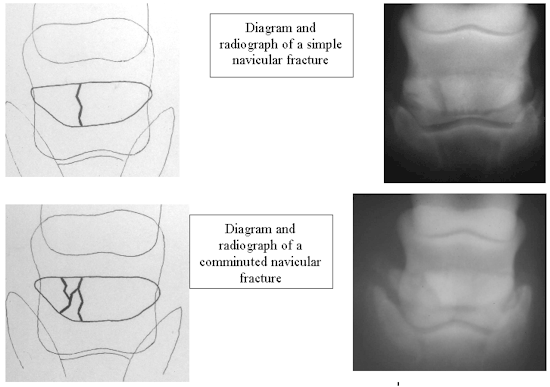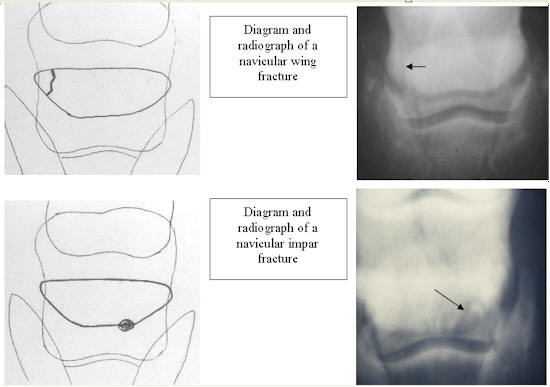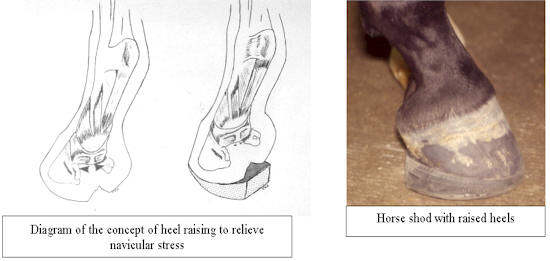Navicular Bone Fractures
Tracy A. Turner, DVM, MS
Navicular bone fractures may be treated conservatively or by surgery. Surgery is expensive and difficult. Therefore, most veterinarians use a conservative management approach. Conservative therapy usually entails variable periods of rest with corrective trimming and shoeing to immobilize thehoof. Palmar digital neurectomy is an option after the fracture heals to increase the horse's soundness. However, the results of this type of therapy have been poor.' The poor results are thought to be due in part to adhesion formation between the navicular bone and the deep flexor tendon.2 Utilizing a variation on a technique originally described in a Norwegian veterinary journal,2 we have treated four navicular fractures and the horses have each become serviceably sound for riding. Two of these horses returned to competition.
2. Methods
Following the diagnosis of a navicular bone fracture, the affected hoof should be trimmed to its normal hoof pastern axis. The hoof is then shod so as to elevate the heels 12'. The use of four, 3' wedgepads and a flat shoe is the easiest method to achieve this. The objective is to prevent the navicular bone from having weight‑bearing contact with the second phalanx and to decrease the strain on the deep flexor tendon. Proper elevation of the hoof can be con?firmed through the use of a lateral radiograph. The horse should be stall rested for the first 60 days; then short periods of handwalking (15 min daily) may begin. The shoe is reset every 4 weeks.At each reset the hoof is trimmed and the horse is reshod but with 3' less elevation. The simplest method is to remove one pad per month. At the end method is to remove one pad per month. At the end of 4 months when the horse is shod normally, an assessment of the degree of soundness is made.
3. Results
To date, four cases have been treated utilizing this method. Three horses had simple sagittal fractures of the navicular bone involving the forelimb, and one had a comminuted fracture of a rearlimb navicular bone. Upon initial presentation these horses were grade IV‑VN lame. Typically, when radiographed,the fracture was noted as a clearly demarcated fracture with well‑defined margins. The fracture line became less defined within 30 days. Presum?ably this was due to bone resorption. Recalcifica?tion around the fracture in each of these cases occurred, but complete radiographic healing of the fracture did not occur in any case. However, the horse's lameness resolved after the 4‑month treat?ment period. Two horses returned to competition, one as a gaited horse and the other as a multipurpose Arabian show horse. The other two horses are ridable and are not lame.This technique is an effective method to treat navicular fractures without surgery. It is the au?thors' opinion that with the use of this technique, one can offer a better prognosis for navicular bone fractures than with conventional shoeing methods.'
Lag screw fixation may still be the best means of repair, but because of the difficulty of the surgery and the special instrumentation required for placement of the screw, the heel elevation technique offers the most effective means to treat the majority of these cases and can be employed by the practitioner in the field.
References
1. Baxter GM, Ingle JE, Trotter GW Complete navicular bone fractures in horses, in Proceedings. 41stAnnu Conv Am Assoc Equine Practnr 1995; 243‑244.
2. ArnbjergJ. Spontaneous fracture of the navicular bone in the horse. Nord Vet Med 1979; 31:429‑435.


